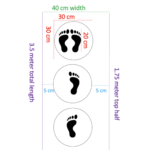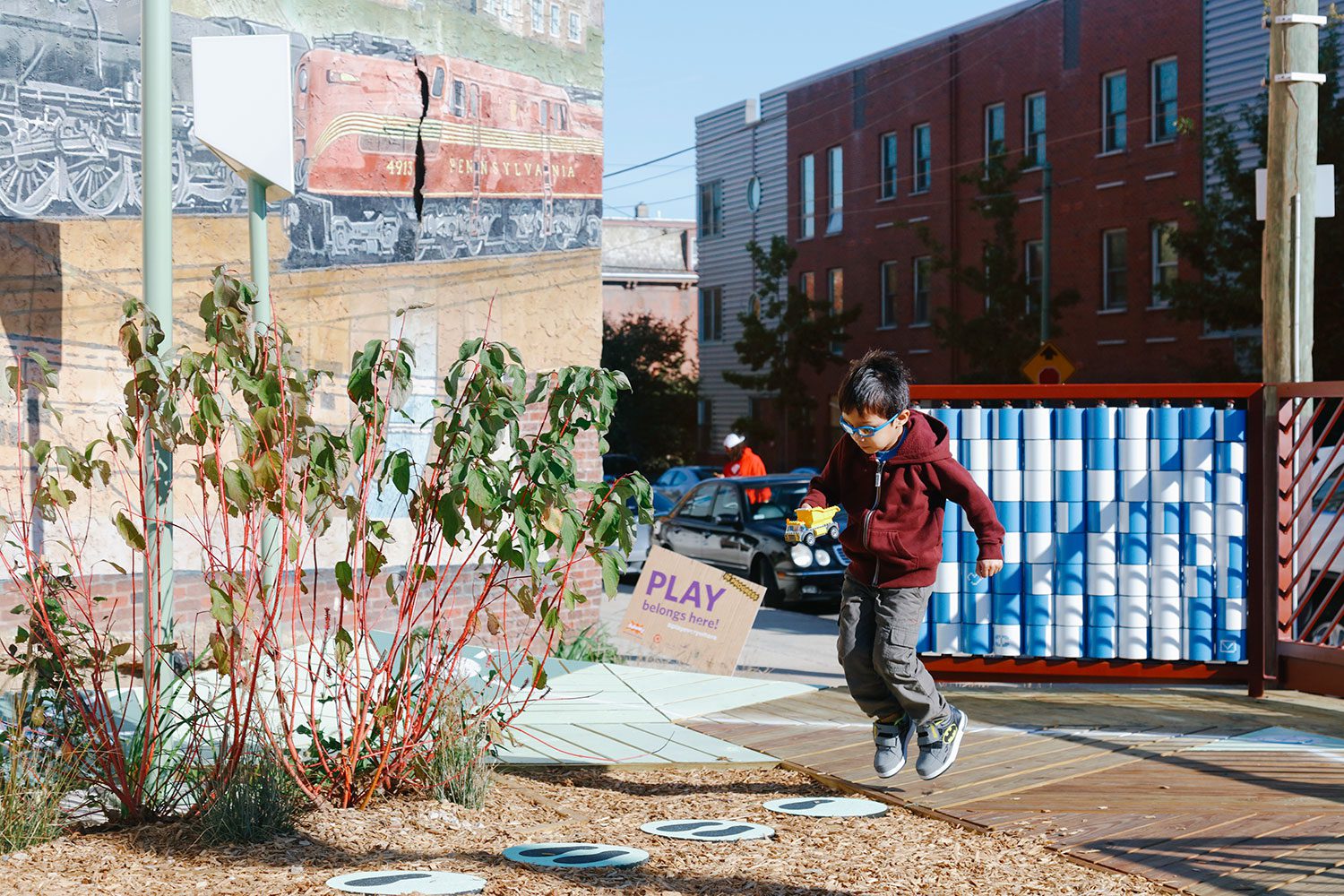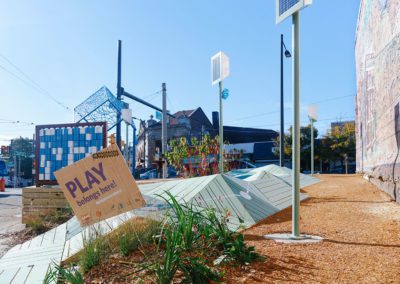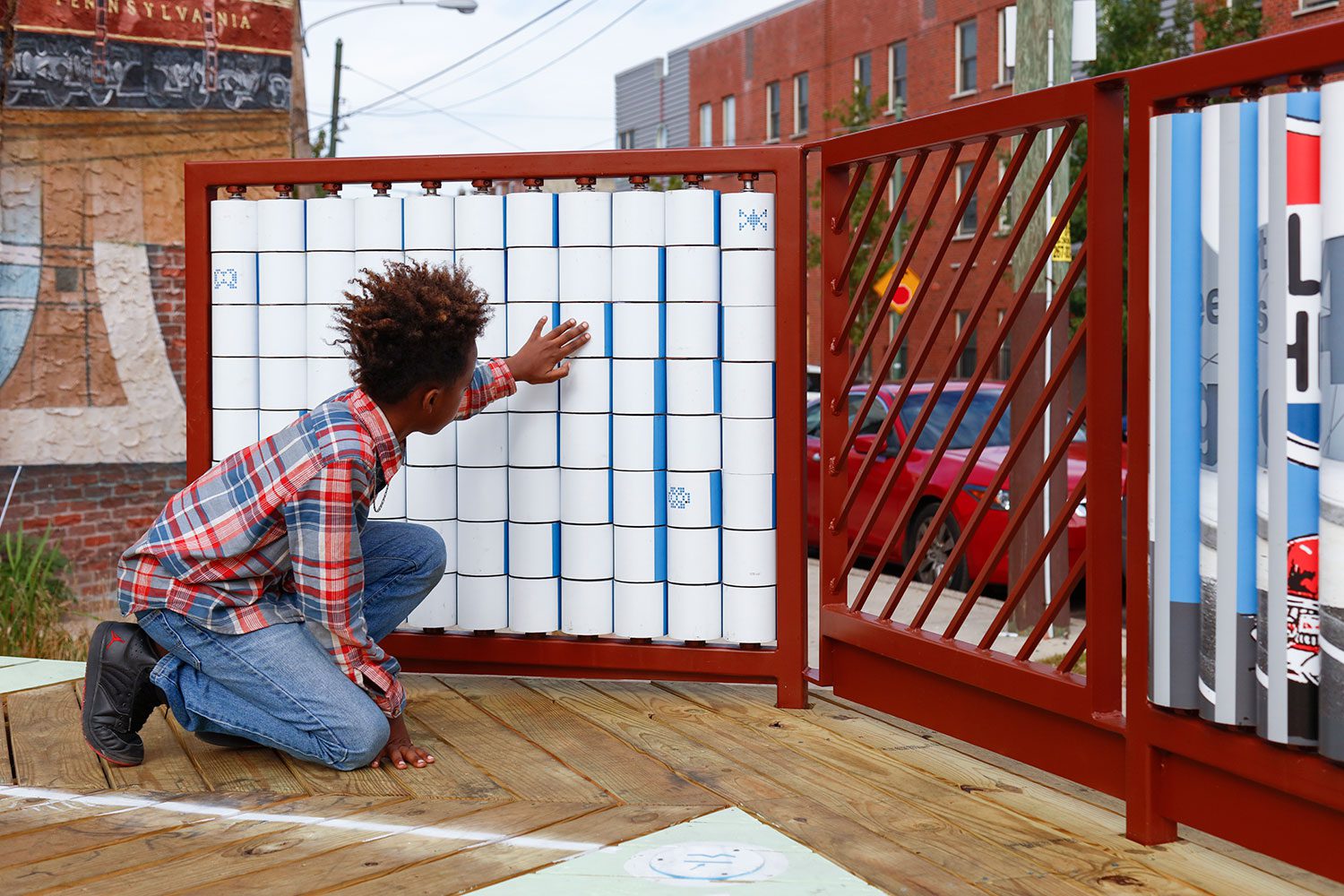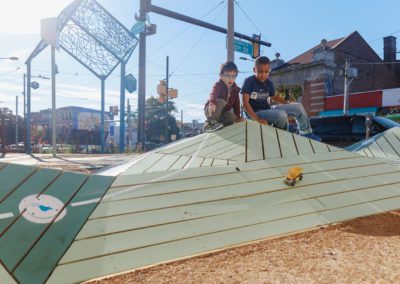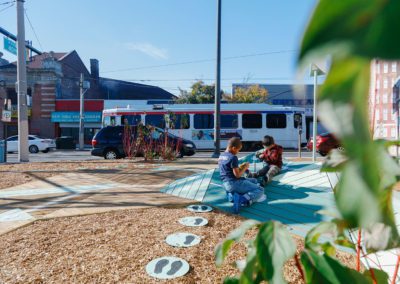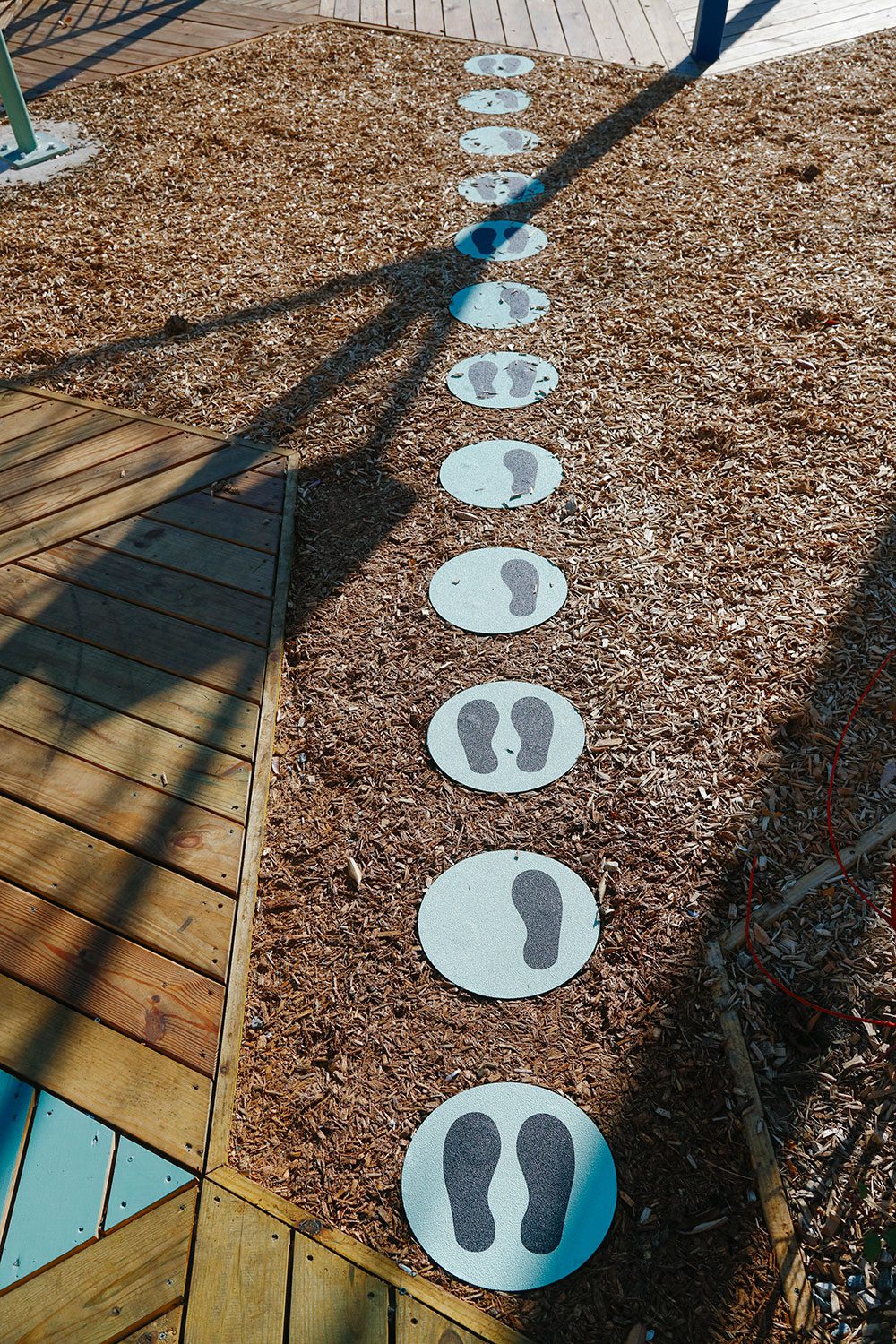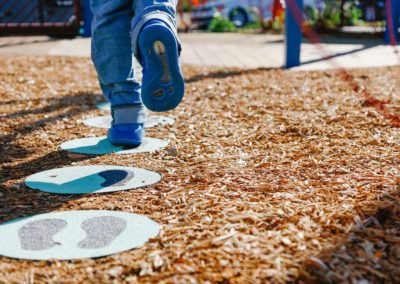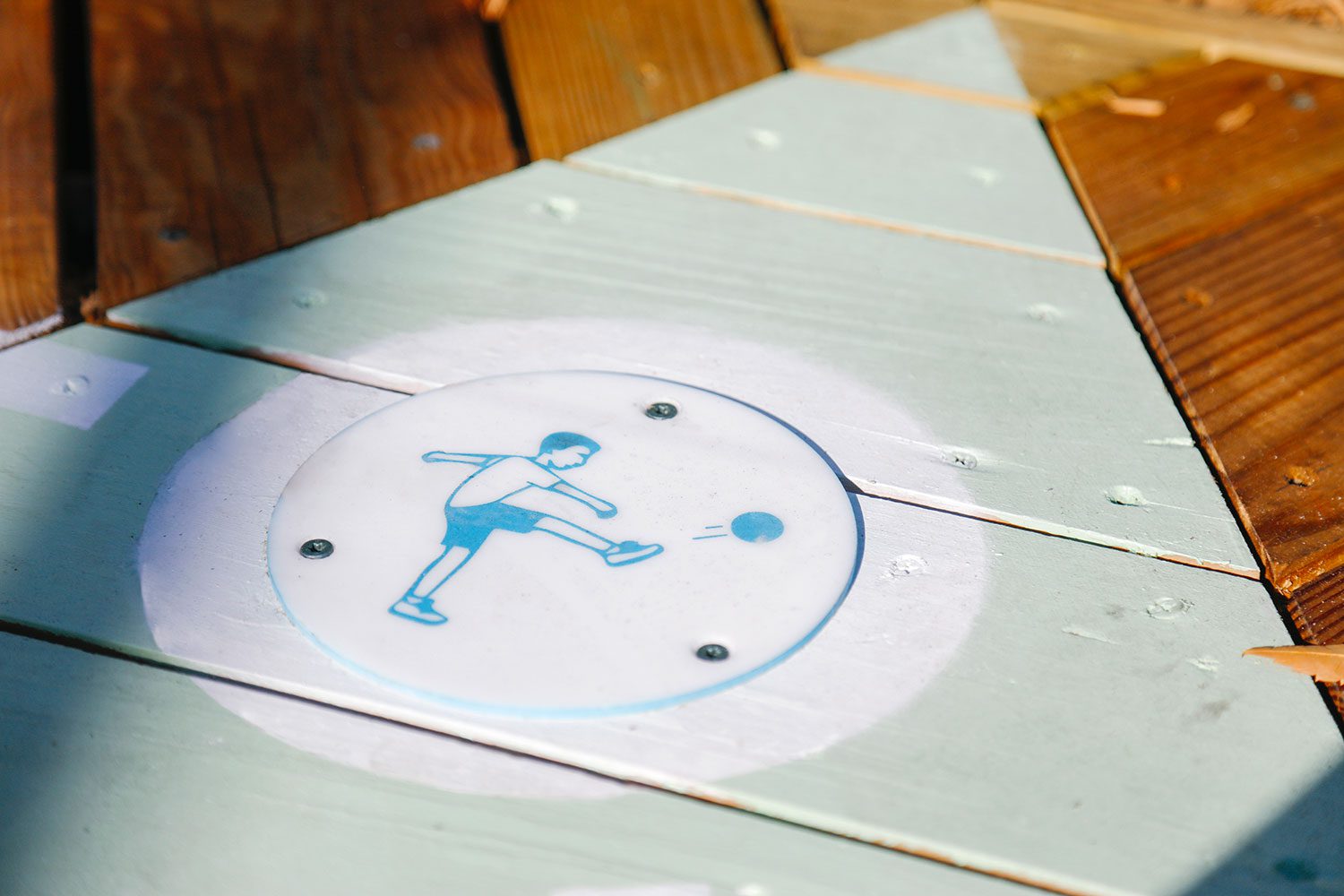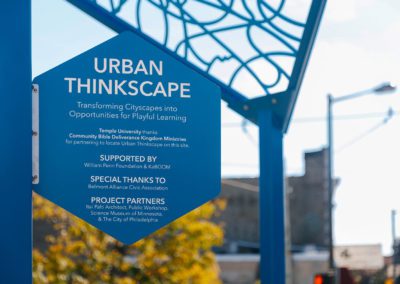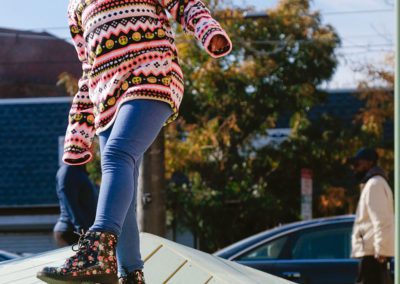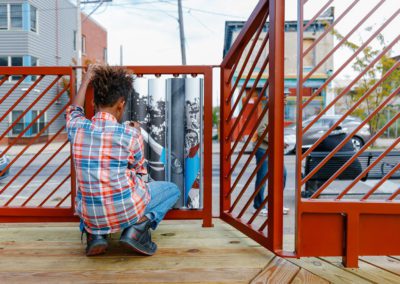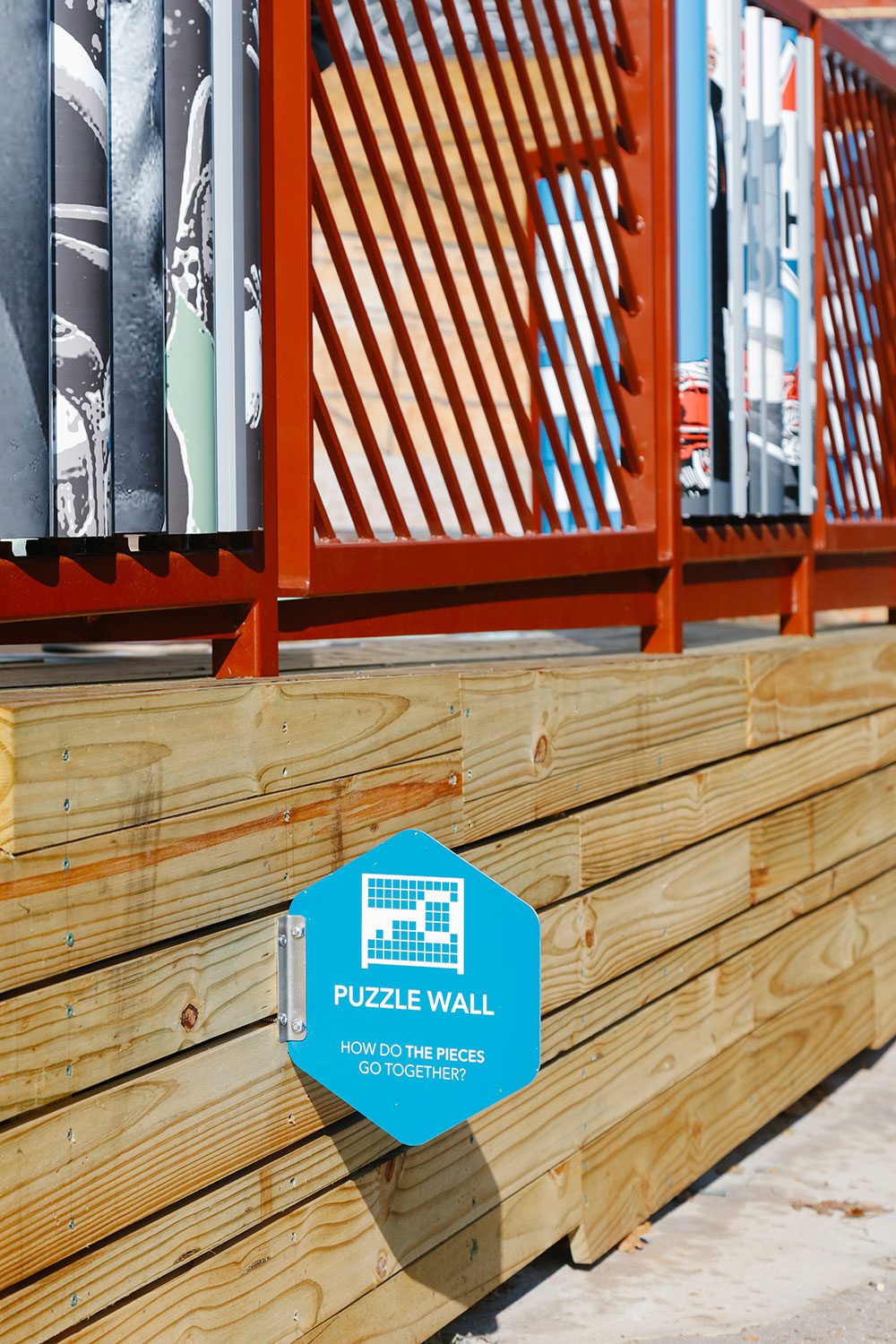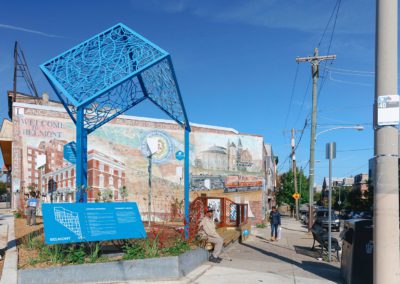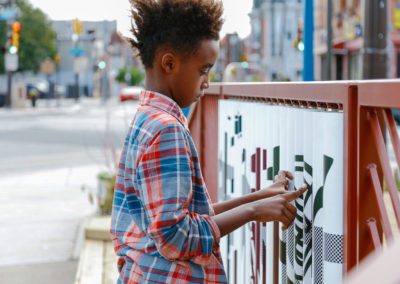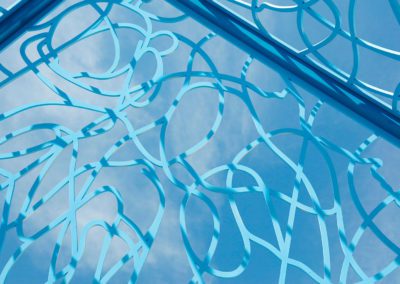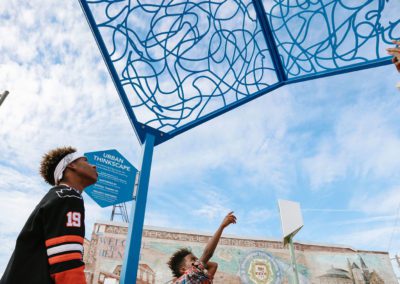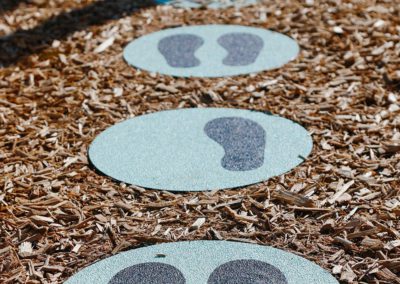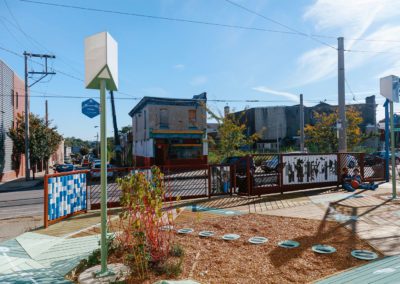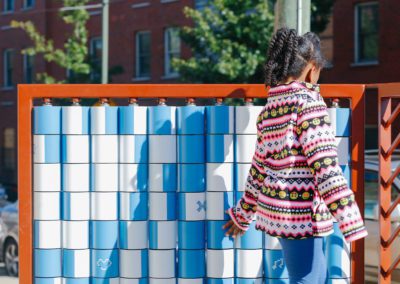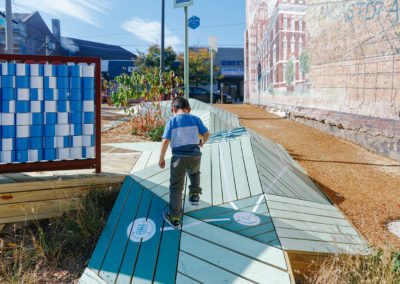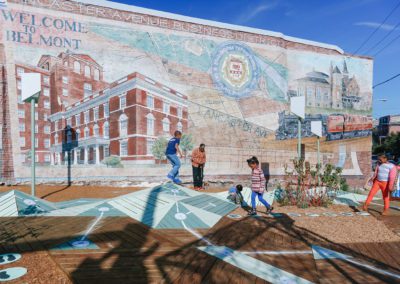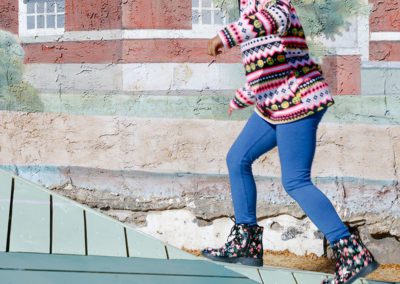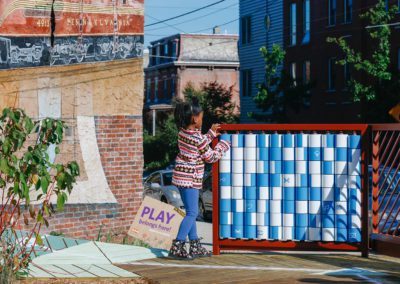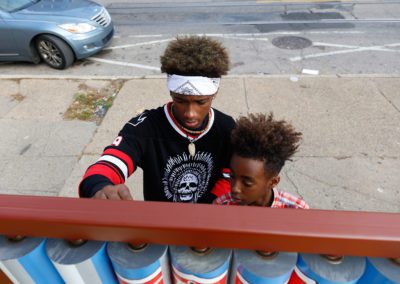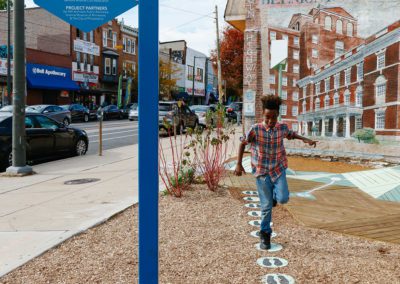PROJECTS > PHILADELPHIA > URBAN THINKSCAPE
Urban Thinkscape
Urban Thinkscape brings the benefits of playful learning, which combines the enjoyable nature of play with a learning goal, to a community, public setting of a bus stop. Benches now include puzzles with movable parts that stimulate spatial skills and become opportunities for exploring language, color, and numbers while on-site signage and this website connect families to additional information and resources about the links between play and learning.
Instead of viewing streets and bus stops merely as conduits from point A to B, Urban Thinkscape creates connections between these shared everyday spaces and the people who occupy them. Urban Thinkscape meets individuals and families where they live by embedding playful learning into the activities of daily life.
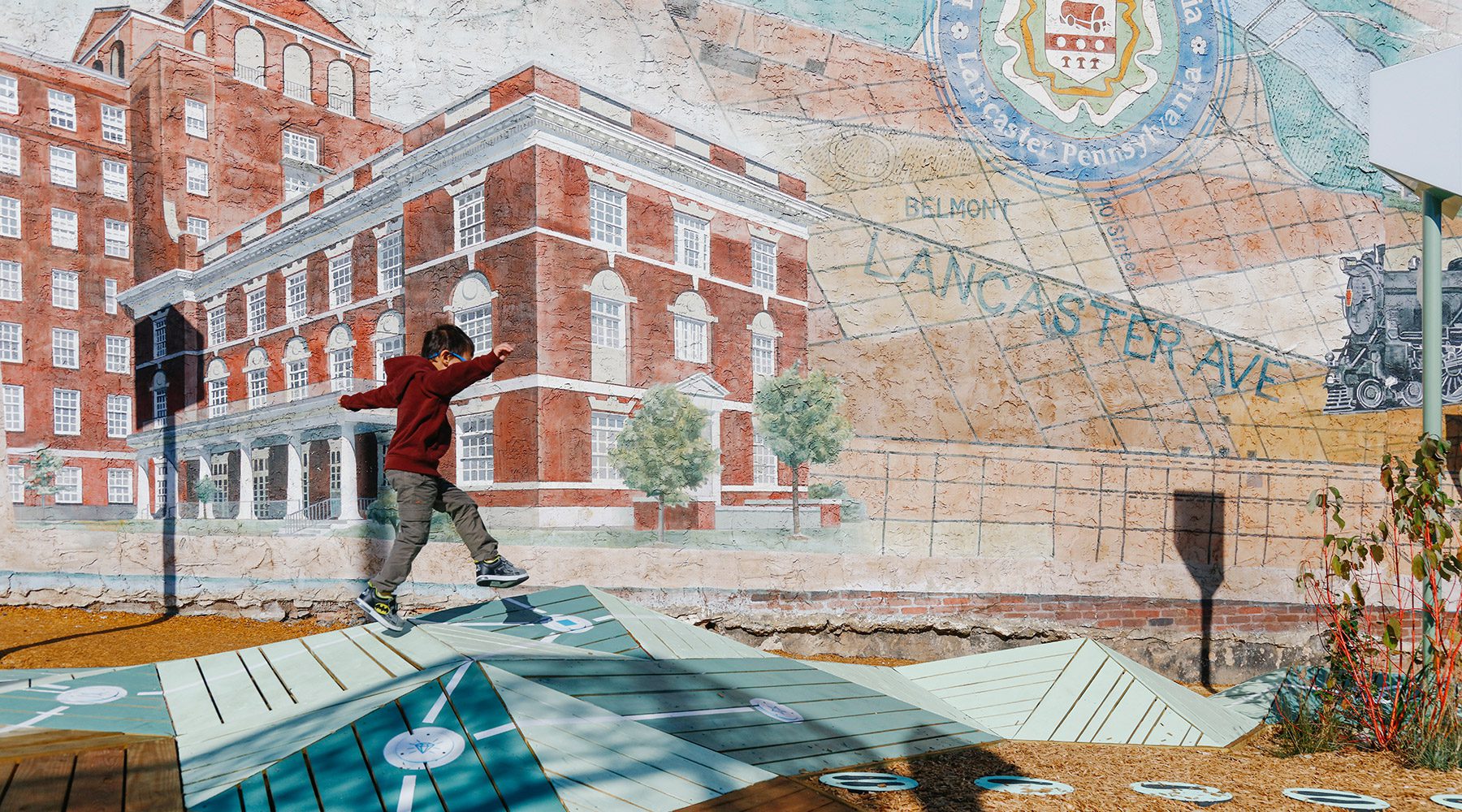
photo: Sahar Coston-Hardy
The Learning Goal
Urban Thinkscape encourages playful interactions between children and caregivers that feature Content in and math, science, and literacy, as well as Collaboration and Communication with peers, adults, and family members.
The Design
Urban Thinkscape began with a community’s dream to energize Philadelphia’s Belmont neighborhood with playful learning. They chose a bus stop next to a grassy lot where Martin Luther King Jr. gave a historic speech in 1965 as part of his “Freedom Now” tour. Puzzles appeared behind bus stop benches, kids can now scramble and climb across story art, and a canopy projects shadows of fruits and vegetables onto an interactive mural of Martin Luther King Jr., all brought to life by over 100 local youth and community members!
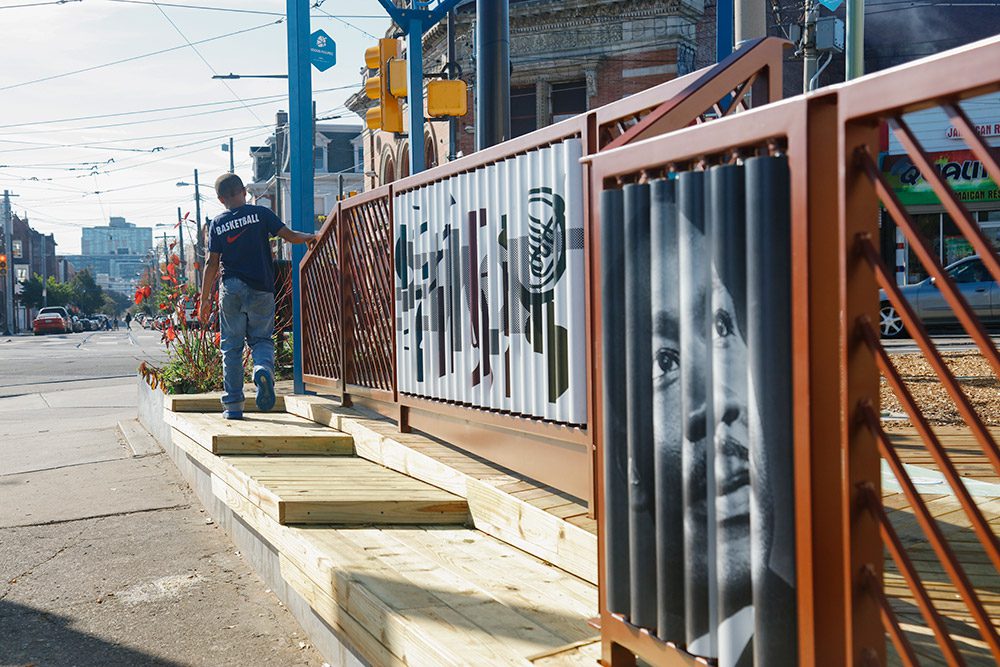
photo: Sahar Coston-Hardy
Activities
Puzzle Wall
The back wall of a bus stop challenges waiting passengers to complete the puzzle. Puzzles promote kids’ math and spatial skills, which help them succeed in school and life! Parents and kids can work together to solve the puzzles.
Jumping Feet
Shoe prints encourage kids to jump, while the pattern develops their ability to control impulses by disrupting the pattern and making them think about their next step! These skills are related to academic achievement. Parents can encourage kids to switch up the pattern–maybe they can try one foot where they see two and two where they see one!
Click the image to download the design file. Design files may not be shared or sold without permission.
Hidden Figures
Kids’ curiosity is activated by searching in the metalwork for images of food, animals, and any other objects they can find! Building this kind of curiosity helps kids become strong problem solvers. Kids can also develop spatial skills by figuring out how the images are projected into the ground. Parents can help kids search out the images and work together to find them all.
Stories
Kids move from one narrative cue to another to create their own story. This activity helps develop narrative skills, which build reading skills. With younger kids, parents can ask them to identify the objects in the pictures. For example, is this a sun or a moon?

The Team
Urban Thinkscape is a partnership between the Belmont Alliance Civic Association (in particular, Ms. Bettye Ferguson, President), Temple Infant and Child Lab, Drs. Roberta Golinkoff and Brenna Hassinger-Das, and architect Itai Palti of the Conscious Cities movement. Public Workshop was also a vital collaborator.
The Supporters
The project is supported by the William Penn Foundation and KABOOM! Play Everywhere.
photo: Sahar Coston-Hardy
The Science
Preliminary results suggest that families at the bus stop are now interacting around the games while talking about numbers and shapes. They are moving, thinking, and talking about language, literacy, and STEM.
COLLABORATION
COMMUNICATION
CONTENT
CRITICAL THINKING
CREATIVE INNOVATION
CONFIDENCE
photo: Sahar Coston-Hardy
